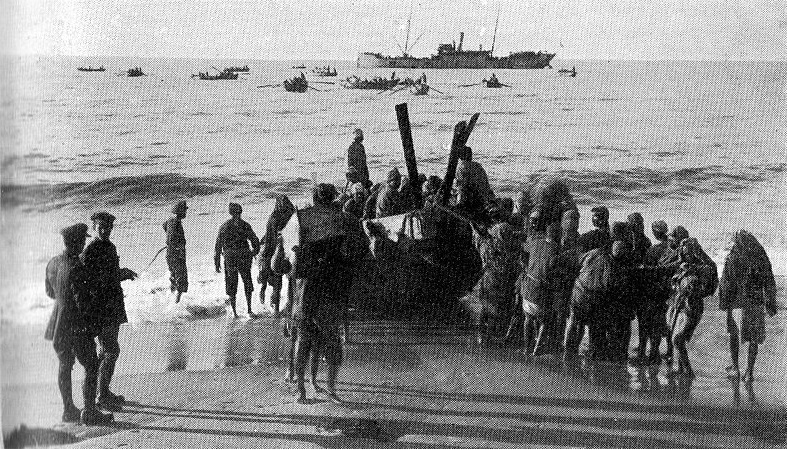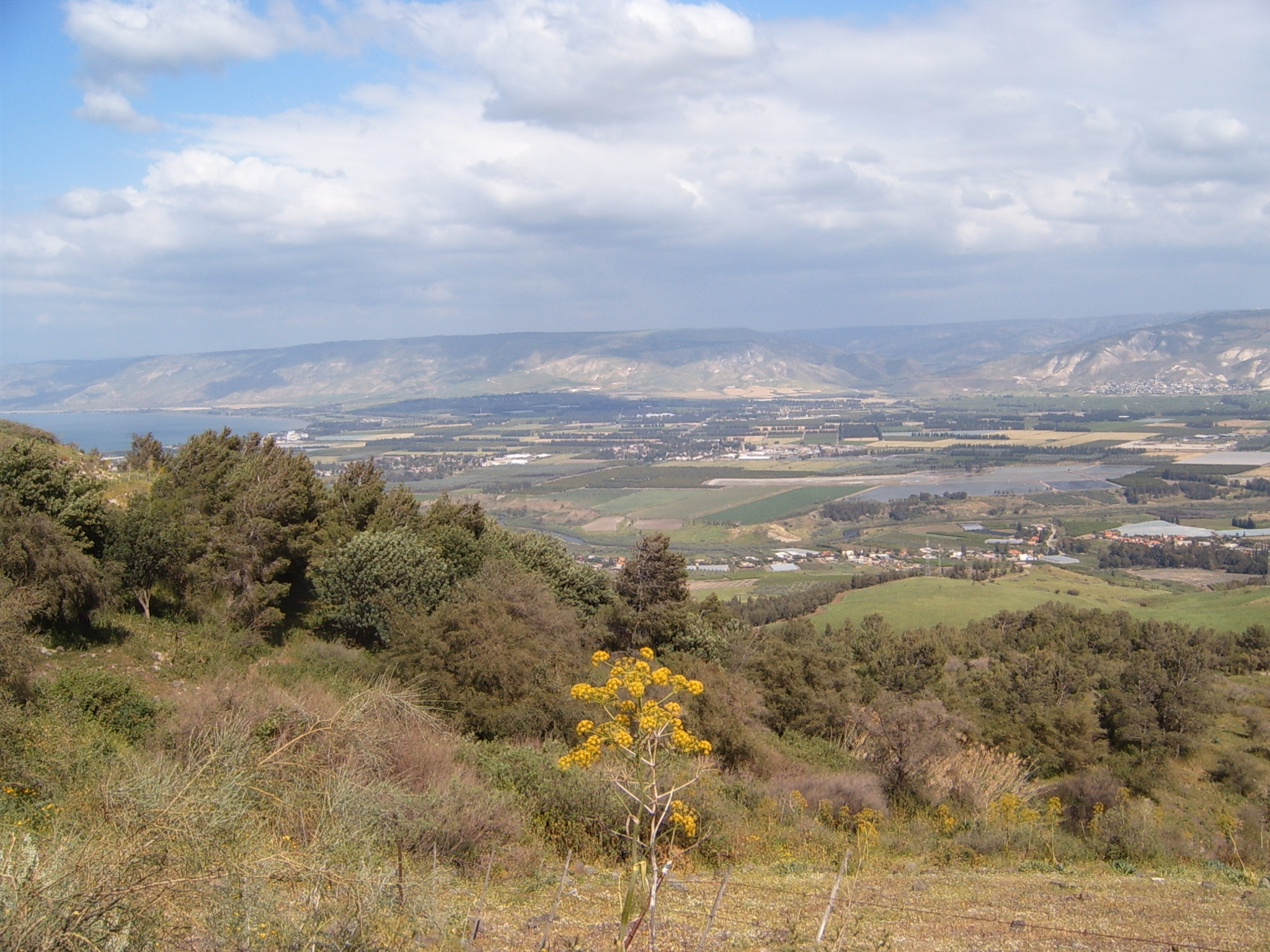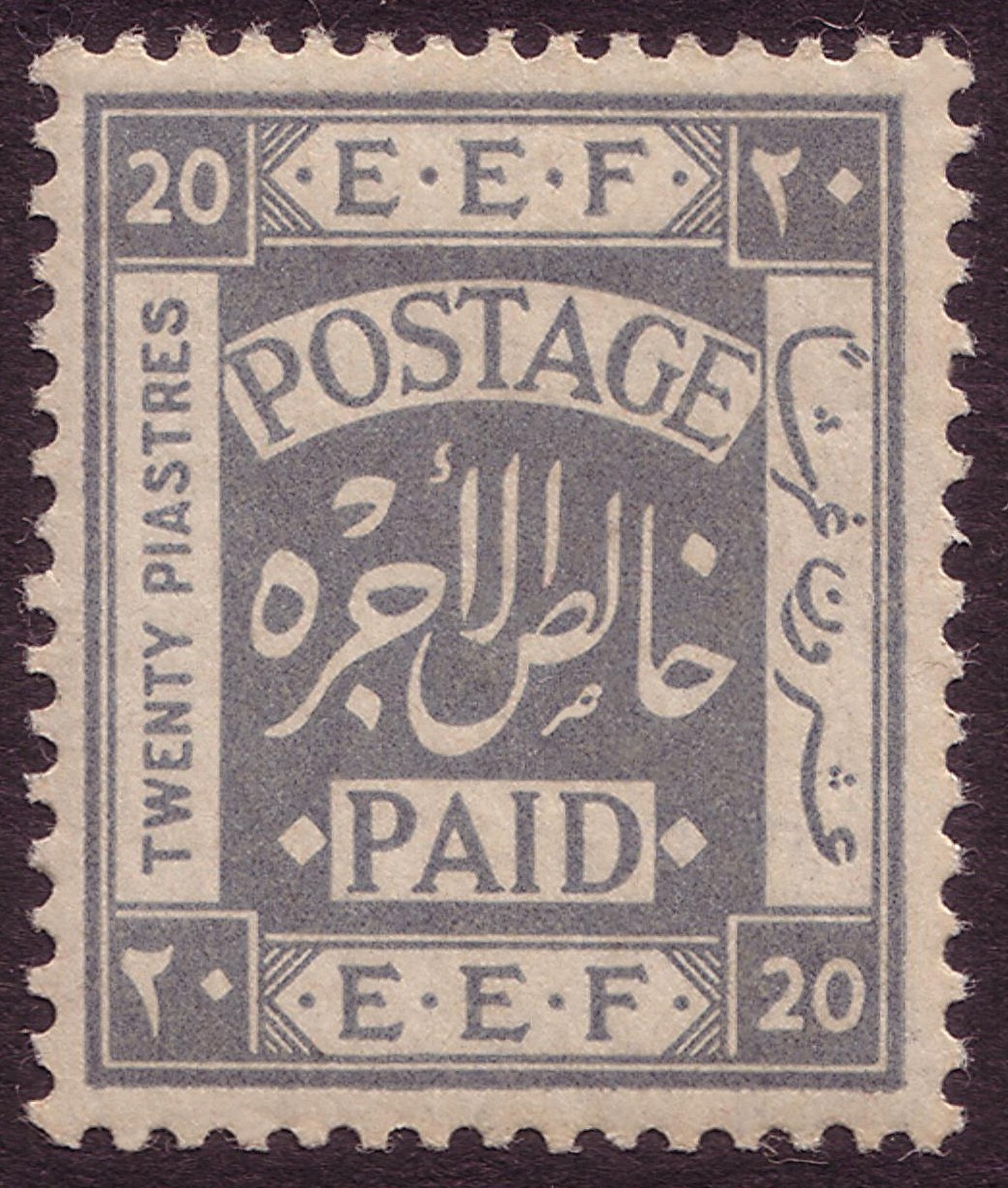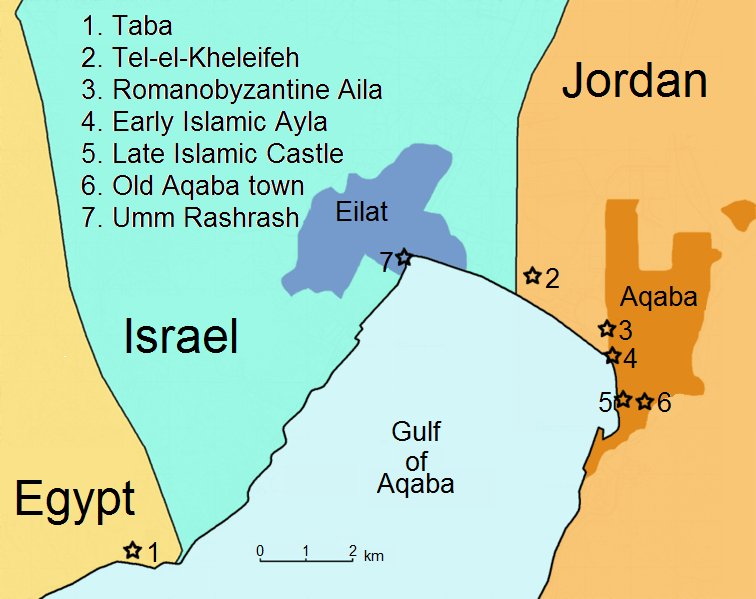|
Egyptian Labour Corps
The Egyptian Labour Corps (also known as the ELC or Labour Corps) was a group of Egyptian labourers who worked for the British Army in Egypt during the First World War's Sinai and Palestine Campaign. Historical context Egypt had historically been part of the Ottoman Empire for hundreds of years. However, starting in the late nineteenth century, British influence in the country began to expand as the Sultans of Egypt proved increasingly incapable of managing the country's financial affairs and start to borrow heavily from foreign financiers, including British businessmen. Eventually, the British conquered Egypt and established a protectorate over the country, bring Egypt (de facto) into the British Empire. As part of this protectorate, the British promised to defend Egypt from Ottoman, African and European incursions and never to request their aid in future conflicts. However, the British quickly realised that they desperately needed the support of Egyptian labour in a land whi ... [...More Info...] [...Related Items...] OR: [Wikipedia] [Google] [Baidu] |
British Army
The British Army is the principal land warfare force of the United Kingdom, a part of the British Armed Forces along with the Royal Navy and the Royal Air Force. , the British Army comprises 79,380 regular full-time personnel, 4,090 Gurkhas, and 28,330 volunteer reserve personnel. The modern British Army traces back to 1707, with antecedents in the English Army and Scots Army that were created during the Restoration in 1660. The term ''British Army'' was adopted in 1707 after the Acts of Union between England and Scotland. Members of the British Army swear allegiance to the monarch as their commander-in-chief, but the Bill of Rights of 1689 and Claim of Right Act 1689 require parliamentary consent for the Crown to maintain a peacetime standing army. Therefore, Parliament approves the army by passing an Armed Forces Act at least once every five years. The army is administered by the Ministry of Defence and commanded by the Chief of the General Staff. The Brit ... [...More Info...] [...Related Items...] OR: [Wikipedia] [Google] [Baidu] |
Ismailia
Ismailia ( ar, الإسماعيلية ', ) is a city in north-eastern Egypt. Situated on the west bank of the Suez Canal, it is the capital of the Ismailia Governorate. The city has a population of 1,406,699 (or approximately 750,000, including surrounding rural areas). It is located approximately halfway between Port Said to the north and Suez to the south. The Canal widens at that point to include Lake Timsah, one of the Bitter Lakes linked by the Canal. History Ismailia was founded in 1863, during the construction of the Suez Canal, by Khedive Isma'il Pasha, Ismail the Magnificent, after whom the city is named. Following the Battle of Kafr-el-Dawwar in 1882 the British established a base there. The head office of the Suez Canal Authority is located in Ismailia at the shore of Lake Timsah. It has a large number of buildings dating from British and French involvement with the Canal. Most of these buildings are currently used by Canal employees and officials. During Wor ... [...More Info...] [...Related Items...] OR: [Wikipedia] [Google] [Baidu] |
Jordan Valley (Middle East)
The Jordan Valley ( ar, غور الأردن, ''Ghor al-Urdun''; he, עֵמֶק הַיַרְדֵּן, ''Emek HaYarden'') forms part of the larger Jordan Rift Valley. Unlike most other river valleys, the term "Jordan Valley" often applies just to the lower course of the Jordan River, from the spot where it exits the Sea of Galilee in the north, to the end of its course where it flows into the Dead Sea in the south. In a wider sense, the term may also cover the Dead Sea basin and the Arabah valley, which is the rift valley segment beyond the Dead Sea and ending at Aqaba/Eilat, farther south. The valley, in the common, narrow sense, is a long and narrow trough, long if measured " as the crow flies", with a width averaging with some points narrowing to over most of the course, before widening out to a delta when reaching the Dead Sea. Due to meandering, the length of the river itself is . This is the valley with the lowest elevation in the world, beginning at below sea level ... [...More Info...] [...Related Items...] OR: [Wikipedia] [Google] [Baidu] |
Rafah
Rafah ( ar, رفح, Rafaḥ) is a Palestinian city in the southern Gaza Strip. It is the district capital of the Rafah Governorate, located south of Gaza City. Rafah's population of 152,950 (2014) is overwhelmingly made up of former Palestinian refugees. When Israel withdrew from the Sinai in 1982, Rafah was split into a Gazan part and an Egyptian part, dividing families, separated by barbed-wire barriers. The core of the city was destroyed by Israel''Razing Rafah — Mass Home Demolitions in the Gaza Strip'' pp. 27–28 and 52–66 (PDF text version) o [...More Info...] [...Related Items...] OR: [Wikipedia] [Google] [Baidu] |
Harry Chauvel
General Sir Henry George Chauvel, (16 April 1865 – 4 March 1945) was a senior officer of the Australian Imperial Force who fought at Gallipoli and during the Sinai and Palestine Campaign in the Middle Eastern theatre of the First World War. He was the first Australian to attain the rank of lieutenant general and later general, and the first to lead a corps. As commander of the Desert Mounted Corps, he was responsible for one of the most decisive victories and fastest pursuits in military history. The son of a grazier, Chauvel was commissioned as a second lieutenant in the Upper Clarence Light Horse, a unit organised by his father, in 1886. After the family moved to Queensland he was commissioned as a second lieutenant in the Queensland Mounted Infantry in 1890, and saw service during the 1891 Australian shearers' strike. He became a regular officer in 1896, and went to the United Kingdom as part of the Queensland contingent for the 1897 Diamond Jubilee of Queen Victoria. ... [...More Info...] [...Related Items...] OR: [Wikipedia] [Google] [Baidu] |
El Arish
ʻArish or el-ʻArīsh ( ar, العريش ' , ''Hrinokorura'') is the capital and largest city (with 164,830 inhabitants ) of the North Sinai Governorate of Egypt, as well as the largest city on the entire Sinai Peninsula, lying on the Mediterranean coast northeast of Cairo. It borders the Gaza Strip and Israel. ʻArīsh is distinguished by its clear blue water, widespread fruitful palmy wood on its coast, and its soft white sand. It has a marina, and many luxury hotels. The city also has some of the faculties of Suez Canal University. ʻArīsh is located by a big wadi, the Wādī al-ʻArīsh, which receives flash flood water from much of north and central Sinai. The Azzaraniq Protectorate is on the eastern side of ʻArīsh. History The earliest historical attestation for the city is found in the Septuagint, Isaiah 27:12. The city grew around a Bedouin settlement near the ancient Ptolemaic outpost of Rhinocorura (in Greek "''the place where noses (of criminals) are cu ... [...More Info...] [...Related Items...] OR: [Wikipedia] [Google] [Baidu] |
Duguid Op P
Duguid ( ) is a Scottish surname, most likely derived from a nickname for a well-intentioned person, from the Middle English ('do') and ('good'). Notable people with the surname include: *Andy Duguid (born 1982), German-Scottish DJ and producer *Brad Duguid (born 1962), Canadian politician *Charles Duguid (1884–1986), Scottish-born Australian Aboriginal rights campaigner *Dale Duguid, Australian visual effects supervisor and producer *David Duguid (1832–1907), Scottish cabinet-maker and medium *David Duguid (born 1970), British politician *Don Duguid (born 1935), Canadian curler * Gerry Duguid (1929–1993), Canadian football player *Irvin Duguid (born 1969), Scottish musician *Jim Duguid, Scottish musician *Karl Duguid (born 1978), English football player *Lorne Duguid (1910–1981), Canadian ice hockey player *Naomi Duguid (born 1950), Canadian food writer *Nigel Duguid (born 1969), West Indian cricket umpire *Terry Duguid (born 1954 or 1955), Canadian politician *William Dug ... [...More Info...] [...Related Items...] OR: [Wikipedia] [Google] [Baidu] |
Egyptian Expeditionary Force
The Egyptian Expeditionary Force (EEF) was a British Empire military formation, formed on 10 March 1916 under the command of General Archibald Murray from the Mediterranean Expeditionary Force and the Force in Egypt (1914–15), at the beginning of the Sinai and Palestine Campaign of the First World War. History Formed in the British protectorate of the Sultanate of Egypt, the initially small force was raised to guard the Suez Canal and Egypt. After the withdrawal from the Gallipoli Campaign the force grew into a large reserve to provide reinforcements for the Western Front (World War I), Western Front, while the Western Frontier Force fought in the Senussi Campaign from 1915 to 1917 and the Eastern Force (EF) defended the canal at the Battle of Romani in August 1916. Following the victory at Romani, part of the Eastern Force pursued the Ottoman Empire, Ottoman invading force back to Palestine (region), Palestine after the victories at the Battle of Magdhaba in December 1916 and t ... [...More Info...] [...Related Items...] OR: [Wikipedia] [Google] [Baidu] |
Wire Netting
Overhead power cabling. The conductor consists of seven strands of steel (centre, high tensile strength), surrounded by four outer layers of aluminium (high conductivity). Sample diameter 40 mm A wire is a flexible strand of metal. Wire is commonly formed by drawing the metal through a hole in a die or draw plate. Wire gauges come in various standard sizes, as expressed in terms of a gauge number. Wires are used to bear mechanical loads, often in the form of wire rope. In electricity and telecommunications signals, a "wire" can refer to an electrical cable, which can contain a "solid core" of a single wire or separate strands in stranded or braided forms. Usually cylindrical in geometry, wire can also be made in square, hexagonal, flattened rectangular, or other cross-sections, either for decorative purposes, or for technical purposes such as high-efficiency voice coils in loudspeakers. Edge-wound coil springs, such as the Slinky toy, are made of special flattened wire. ... [...More Info...] [...Related Items...] OR: [Wikipedia] [Google] [Baidu] |
Arab Revolt
The Arab Revolt ( ar, الثورة العربية, ) or the Great Arab Revolt ( ar, الثورة العربية الكبرى, ) was a military uprising of Arab forces against the Ottoman Empire in the Middle Eastern theatre of World War I. On the basis of the McMahon–Hussein Correspondence, an agreement between the British government and Hussein bin Ali, Sharif of Mecca, the revolt was officially initiated at Mecca on June 10, 1916. The aim of the revolt was to create a single unified and independent Arab state stretching from Aleppo in Syria to Aden in Yemen, which the British had promised to recognize. The Sharifian Army led by Hussein and the Hashemites, with military backing from the British Egyptian Expeditionary Force, successfully fought and expelled the Ottoman military presence from much of the Hejaz and Transjordan. The rebellion eventually took Damascus and set up the Arab Kingdom of Syria, a short-lived monarchy led by Faisal, a son of Hussein. Following the Sy ... [...More Info...] [...Related Items...] OR: [Wikipedia] [Google] [Baidu] |
Aqaba
Aqaba (, also ; ar, العقبة, al-ʿAqaba, al-ʿAgaba, ) is the only coastal city in Jordan and the largest and most populous city on the Gulf of Aqaba. Situated in southernmost Jordan, Aqaba is the administrative centre of the Aqaba Governorate. The city had a population of 148,398 in 2015 and a land area of . Today, Aqaba plays a major role in the development of the Jordanian economy, through the vibrant trade and tourism sectors. The Port of Aqaba also serves other countries in the region. Aqaba's strategic location at the northeastern tip of the Red Sea between the continents of Asia and Africa has made its port important over the course of thousands of years. The ancient city was called ''Elath'', adopted in Latin as ''Aela'' and in Arabic as ''Ayla''. Its strategic location and proximity to copper mines made it a regional hub for copper production and trade in the Chalcolithic period. Aela became a bishopric under Byzantine rule and later became a Latin Catholic titu ... [...More Info...] [...Related Items...] OR: [Wikipedia] [Google] [Baidu] |
Sinai Peninsula
The Sinai Peninsula, or simply Sinai (now usually ) (, , cop, Ⲥⲓⲛⲁ), is a peninsula in Egypt, and the only part of the country located in Asia. It is between the Mediterranean Sea to the north and the Red Sea to the south, and is a land bridge between Asia and Africa. Sinai has a land area of about (6 percent of Egypt's total area) and a population of approximately 600,000 people. Administratively, the vast majority of the area of the Sinai Peninsula is divided into two Governorates of Egypt, governorates: the South Sinai Governorate and the North Sinai Governorate. Three other governorates span the Suez Canal, crossing into African Egypt: Suez Governorate on the southern end of the Suez Canal, Ismailia Governorate in the center, and Port Said Governorate in the north. In the classical era the region was known as Arabia Petraea. The peninsula acquired the name Sinai in modern times due to the assumption that a mountain near Saint Catherine's Monastery is the Biblical ... [...More Info...] [...Related Items...] OR: [Wikipedia] [Google] [Baidu] |






.jpg)
